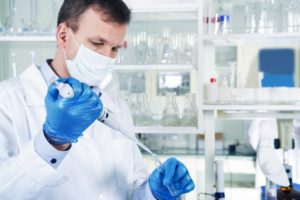Dentist in Blaine Highlights The Top Dental Discoveries From 2016
October 20, 2017
 It’s common for dentists, as well as most medically professionals, to stay up to date on new technology, research data, and medical procedures designed to help patients more every day. When new research is reported, it can truly shake the industry from the top down. With that being said, what were some of the most notable discoveries made in 2016?
It’s common for dentists, as well as most medically professionals, to stay up to date on new technology, research data, and medical procedures designed to help patients more every day. When new research is reported, it can truly shake the industry from the top down. With that being said, what were some of the most notable discoveries made in 2016?
This list covers several different topics as they relate to dentistry, such as oral health, anesthetics, and cavities. However, it also mentions male testosterone, breathing habits, and cancer. You don’t want to miss what your dentist in Blaine is sharing today.
Low Testosterone May Increase Risk of Periodontal Disease
Based on a study done at Texas A&M University Baylor College of Dentistry, researchers studied 5 rhesus macaques, a heavily studied species of monkey, 4 of which had been castrated prior to dying of natural causes. All of the castrated males showed signs of periodontitis and other oral problems much worse compared to the intact macaque. In fact, two of the castrated geriatric males showed dramatic receding in the bone that supports teeth.
New Research Shows Promise for Those Afraid of Needles
A new technique known as iontophoresis, which introduces compounds into the body through the skin via a localized electric current, might be able to replace the need for topical painkillers and anesthetic injections via needles. If the process of administering painkillers was streamlined through this method, dentists could also save time and money.
“Bioactive” Glass to Reduce Bacteria’s Ability to Attack Fillings
Engineers at Oregon State University have discovered a recent breakthrough in bioactive glass due to its bone healing properties. The glass is made of silicon, calcium, and phosphorus oxide, and because of its active properties could be a solution to degrading tooth fillings which tend to use inert glass fillers.
Gum Disease Shows Link to Highly Deadly Cancer
Researchers from the University of Louisville School of Dentistry examined a bacterium that causes gum disease and esophageal cancer to see if there was an existing link. Out of 130 patients, 100 of which had cancer and 30 controls, 61 percent had the same bacteria found in the gum disease. This could allow dentist to discover esophageal cancer sooner in their patients.
Patients With More Fillings Face Increased Risk to Mercury Exposure
A definitive link between increased mercury levels in the blood and dental fillings was announced by researchers at the University of Georgia’s College of Public Health. After examining 14,000 patients, those with more than eight amalgam fillings showed to have 150 percent more mercury in their blood.
New Strain of Bacteria Could Help Combat Cavities
Based on a study from the University of Florida, a new type of bacterial strain (Streptococcus) identified as A12 could help bacteria in patients break down urea and arginine better. Breaking down these compounds creates ammonia, which helps maintain a healthy pH level in the mouth, reducing the number of cavities.
Chemicals in Water Bottles, Food Containers Could Harm Children’s Teeth
Researchers from the French National Institute of Health and Medical Research found that minimizing exposure to endocrine disrupters would be one way to reduce enamel weakening at the early stages of childhood. Chemicals that act as endocrine disrupters include BPA and Vinclozolin, which are commonly found in plastics and fungicide respectively.
Higher Risk of Tooth Decay By Breathing Through the Mouth
Based on a study from the University of Otago’s Sir John Walsh Institute, oral pH levels are heavily influenced by whether your mouth is open while sleeping. With the candidates recording pH levels as low as 3.6 and tooth enamel demineralizing at 5.4, it’s no wonder dentists want to help mouth-breathers.
Common Bacteria Could Help Treat Celiac Disease (CD)
Researchers at Boston University’s Henry M. Golden School of Dental Medicine have discovered a common oral bacteria known as Rothia, that carries a gluten-degrading enzyme. This product could act as a preferred therapy for those with gluten intolerance due to CD.
New Liquid Solution Could Aid in Diagnosing Tooth Decay Earlier
A simple diagnostic liquid solution designed by Douglas Benn, D.D.S., Ph.D., could help dentists discover cavitated tooth decay sooner. Since decay occurs in two stages (an initial non-cavitated state where filling isn’t needed and a cavitate state where it is) this test could help dentists distinguish them earlier, reliving the need to perform a filling outright.
About the Author
Dr. Green attended St. Olaf College in Northfield, MN where he received his BA in Biology with a minor in Sports Medicine. He then obtained this DDS from the University of Iowa College of Dentistry and has been practicing in Minneapolis/ St. Paul metro area ever since. Averaging 75+ hours of continuing education each year, five times the requirement for dentists in Minnesota, it’s clear Dr. Green has an extreme thirst for knowledge and new information. To learn more about his practice you can contact him at (763) 269 8650 or visit his website.
No Comments
No comments yet.
RSS feed for comments on this post.
Sorry, the comment form is closed at this time.

